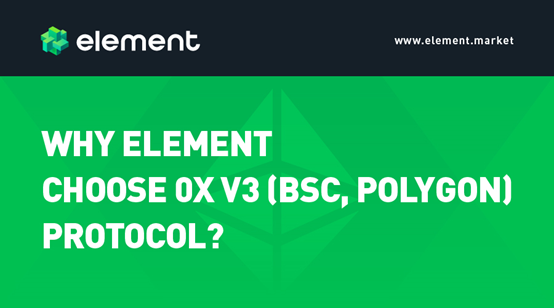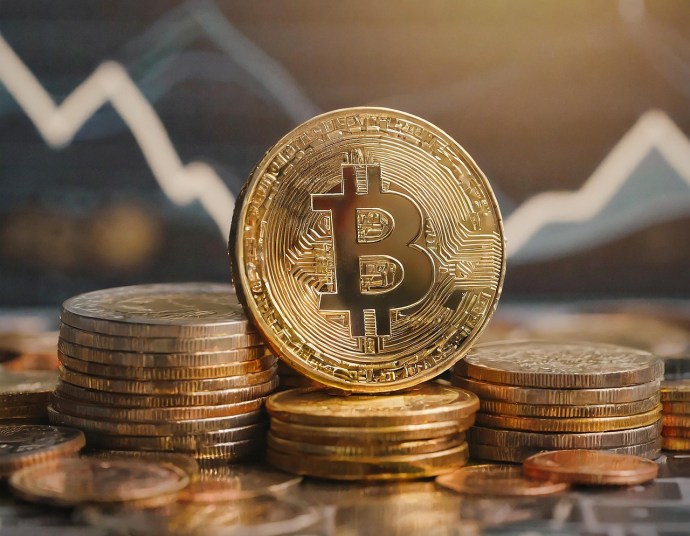Reason to trust

How Our News is Made
Strict editorial policy that focuses on accuracy, relevance, and impartiality
Ad discliamer
Morbi pretium leo et nisl aliquam mollis. Quisque arcu lorem, ultricies quis pellentesque nec, ullamcorper eu odio.
News from the Element team, Element NFT Marketplace will officially support NFT trading on two additional chains by the end of December, and NFT trading options will become even more diverse.
Based on the current NFT market perspective, NFT is starting to move from digital to real assets and demand for the NFT market becoming particularly hot. To some extent, crypto manias are starting to flock into NFT companies, building NFT markets and using this market hype as a business opportunity.
Onchain VS Offchain NFT trading
As we all know, the centralized digital asset control has led to hundreds of millions (if not billions) of dollars lost in the traditional cryptocurrency space, in addition to improving the level of network security, another approach in the NFT domain is off-chain transactions.
The digital art may not live on a blockchain and may be stored “off-chain” or simply, not on a blockchain. Off-chain storage includes centralized servers within the company or an InterPlanetary File System (IPFS). The issue with centralized storage is that if the server goes down (or the company dissolves) the image would be lost. IPFS is a more secure method of finding data as it utilizes a distributed, decentralized system. While still off-chain, if a storage location (node) goes down in one spot it may be found in another location.
There is a big difference between the off-chain and on-chain marketplace. For example, within the Ethereum ecosystem, Element marketplace offers off-chain NFT listing, meaning the wallet of the NFT owner retains full custody of the asset right until the point of transfer.
By utilizing an off-chain marketplace, users do not have to deploy their NFT to a centralized smart contract of an exchange that hackers can potentially exploit, leading to the complete loss of their stored NFTs forever. Think about it, you’ve probably heard of countless marketplace hacks, and these were all only possible because the marketplaces had full control over their users’ assets and did not have the proper security protocols in place to offset these possibilities.
Embrace 0x Protocol
Ethereum network represented by Wyvern Protocol and BSC and Polygon network represented by 0X Protocol are the mainstream adopted in the current NFT marketplace.
Wyvern Protocol is a suite of smart contracts that have been audited and battle-tested in real-world usage. The Wyvern Protocol enables users to swap state changes such as an NFT ownership state for a cryptocurrency ownership state. So, when a seller sells an NFT, it transfers to the buyer instantly.
For example, trading on OpenSea is a minimal trust operation. This is because OpenSea uses the so-called “Wyvern protocol”. The Wyvern protocol enables users to exchange state changes (e.g. NFT ownership status) for cryptocurrency ownership status. Thus, when the seller sells the NFT, it is immediately transferred to the buyer.
The 0x protocol is an open protocol that enables the peer-to-peer exchange of assets on the Ethereum blockchain. 0x smart contracts on BSC are identical to those on Ethereum, which have been audited and adopted by the 0x community.
The development of the NFT marketplace on Polygon is the same as any other blockchain, we need to build a web application that focuses on increasing people’s interaction. Marketplaces built with Polygon will charge a very low gas fee. Element(www.element.market), the world’s top three NFT trading market, currently has limitations in implementing transactions only on the Ethereum chain, so there is an urgency to implement transactions on other chains.
Why choose 0x protocol(BSC&Polygon)
- Low cost, fast transaction time
BSC or Polygon aims to be the most inclusive blockchain, allowing anyone to participate, BSC processes faster than Ethereum and its lower Gas fee addresses major pain points.
- Extensive wallet support
The ERC712 standard has been implemented by dozens of established wallets with proven security records, namely Trust Wallet, MetaMask, Math Wallet, SafePal or our own Binance Extension Wallet.
- Marketing and technical support
The best projects on the BSC or Polygon receive direct marketing and technical support from the BSC network building team.
At a high level, the NFTs in these projects exist in two parts—the smart contract and the metadata for the actual artwork. The smart contract exists on a blockchain, typically Ethereum, (although that is changing rapidly), and contains a set of rules or standards that facilitates the transaction and serves as a digital description of the content.
All in all, NFT buyer prefer BSC or Polygon for its speed and lower Gas fees. The Binance Smartchain is a community-based, decentralised smart contract blockchain open source system, and compatible with the Ethereum Virtual Machine (EVM).
Conclusion
The young ecosystem, such as BSC, Polygon, offers many unique advantages and opportunities for developers that they cannot find elsewhere. By building on BSC, you will be a pioneer in a new inclusive blockchain that empowers millions of people around the world.
About Element
Element is a decentralized NFT marketplace based on Ethereum, Polygon, and BSC, that helps you create, discover, and exchange. Element provides an NFT value trading platform for both creators and investors. learn more on the website: https://www.element.market/.



























